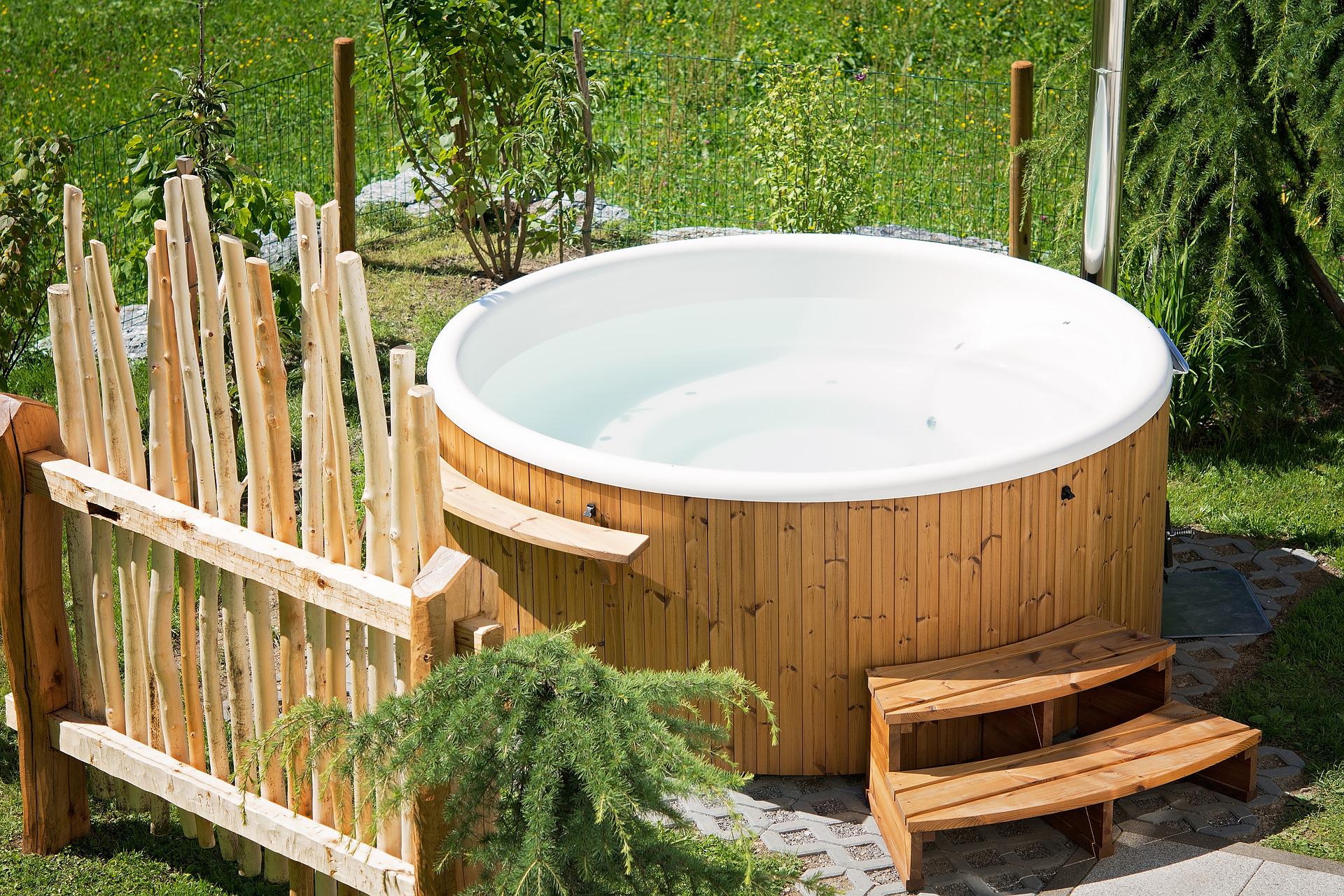A beginner's guide to hot tubs

There are many ways to recreate the ambience of a hotel or spa resort at home, not least investing in a hot tub. This centrepiece of hotel leisure suites and swimming pool complexes is surprisingly affordable and easy to maintain, providing you have the space and infrastructure to accommodate it in the first place…
Finding room
Hot tubs come in a variety of shapes including circular and rectangular designs, though a square tub is the default. Sizes vary from two-person tubs measuring roughly six feet square to larger eight-occupant devices that peak at nine feet in either direction. Any tub requires flat and level ground, which should ideally be flagstones or solid concrete, to evenly distribute weights which can reach 3,000 kilograms once filled with water and people.
Consider sight lines from surrounding properties if your garden isn’t completely private; neighbours might react strongly to the sight of people in bikinis drinking cocktails in a bubbling tub. In terms of access, you’ll need one foot of clearance on all sides and around 18 inches on the side hosting the control panel. Heights are pretty standard at roughly three feet, though some taller tubs (or shorter buyers) might need stepped access. This can either be freestanding or fixed, like the tubs themselves…
Material world
Cheaper hot tubs tend to be inflatable, resembling outsized paddling pools, with ribbed sides inflated using a standard domestic plug. However, their plastic outers are less comfortable than a permanent tub, with greater risk of damage and inferior jet power. They’re also expensive to run compared to solid-sided permanent tubs, which can either be left freestanding or embedded into a raised patio.
Permanent devices are more likely to have moulded acrylic lounger beds or allocated seating, rather than simply a flat base which becomes surprisingly uncomfortable after a few minutes. They’ll be manufactured from galvanised or stainless steel, with thick waterproof membranes inside. Look for fully-foamed tubs which retain heat more efficiently, surrounded by treated timber cabinets and airtight covers with lockable clips, ideally sitting on a heat-retaining ABS base.
Equipment
The standard specifications on high-end models might come as a surprise, with in-built Bluetooth-powered speakers and even TVs alongside ambient lighting. The quantity, quality and intensity of individual water jets varies hugely, while some can be adjusted to deliver the aquatic equivalent of a Swedish massage. Hydrotherapy is a key benefit of a hot tub, soothing aching limbs and providing sensory relaxation; optional waterfalls achieve a similar effect.
While cheaper tubs run off a standard 13-amp plug, more sophisticated models require a dedicated 32A electrical supply. This is more expensive to install but cheaper to run, and it’ll transform the jet strength and speed of warming. The latter is particularly significant, with heaters ranging from 2kW to 9kW – bigger is obviously better.
Maintenance
Hot tubs do much of the heavy lifting themselves, with integrated filtration and (in high-end models) bacteria-eliminating UV systems and ozone generators. Ironically, cheaper products can be more expensive and time-consuming to maintain, whereas pricier tubs will retain more value and could last you into the 2030s.
If you’re not sure whether the hot tub life is for you, it’s possible to test the waters (pun intended) by renting a tub for a period of time, though it’s likely to be a lightweight inflatable design. You might decide a particular device’s control panel is unresponsive, or your garden would benefit from exterior lighting for night-time use. Whether you’re renting or buying, look for a supplier who’s a member of either BISHTA or SPATA – the two hot tub industry associations.
Back to Latest Posts




